
PROS:
- Powerful 3,000Pa vacuum makes short work of most floor types
- Self-emptying dust bin reduces risks of exposure to dust and bacteria
- Easy-to-use app with scheduling functionality
CONS:
- Average mopping performance
- App can only store one map
- Loud self-emptying vacuum
Houses today are filled with Internet-connected devices that aim to make life easier and more convenient, but we often still find ourselves toiling over the things that should actually be prioritized over phone-controlled lights. Cleaning the house, for example, is literally a chore that few like to do but is critical to healthy living, and they are, therefore, perfect for the kind of automation that today’s technologies can offer. To be fair, robot vacuums have been around far longer than most “smart” home appliances, but most of them still require the owner to do more work than necessary. Fortunately, there is now a new breed of vacuum cleaners that are trying to fix those flaws little by little, and the self-emptying Yeedi Vac Station is one such example. But does it work as advertised, or does it end up making you work even more? We make the Vac Station go around the house for a few turns to give you that answer.
Designer: Yeedi
Aesthetics
The design of robot vacuum cleaners is a bit of an irony. On the one hand, they do try their best to look appealing and attractive so that they don’t mar the beauty of your home’s ambiance. On the other hand, they themselves also become magnets to the very dirt and dust they try to clean, which could end up achieving the opposite aesthetic.

The Yeedi Vac Station is, unfortunately, an example of such a dichotomy. Make no mistake, its predominantly white body with a few black parts and accents give it a minimalist vibe that will fit any theme you might have going in a room. Of course, everyone knows that white can easily get dirty, especially for tools that are constantly exposed to dirt, dust, and similar elements. All black vacs do exist, though those only mask the grime while also highlighting the dust. Alas, we still have to wait for a dirt-resistant, self-cleaning material of the future that these vacuum cleaners could use to keep themselves hygienic on the outside as well.
The design of the vacuum cleaner itself is pretty average for its kind. Its circular body allows it to move around easily and navigate corners and edges. It is shorter than most vacuums, which makes it easier for the cleaner to go under beds and sofas. Its top is almost bereft of any detail except for the motion-sensing camera, the power button, and the company’s logo. The bottom, on the other hand, is where all the action is, with three wheels, the spinning side brush, the main brush that actually picks up the dirt, and the removable mopping pad attached to a plate. Beneath this plate is the 240ml water tank that enables the vacuum’s mopping function.
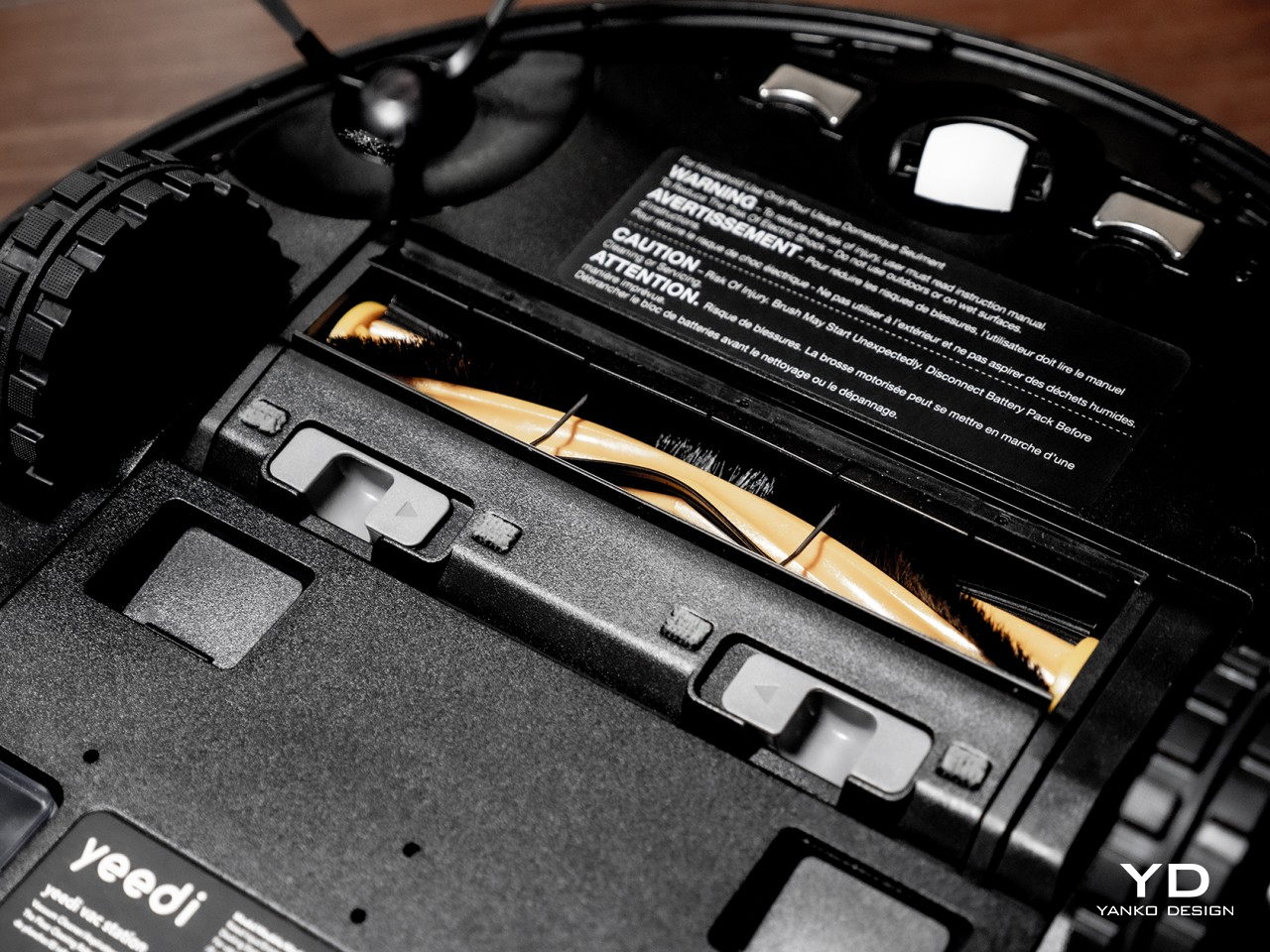
While the robot vacuum is low and discreet, the Vac Station itself is the opposite. It is 430mm/16.9in tall and is an attention-grabber anywhere you put it in a room. You’ll definitely have to allocate enough space for it and the robot to maneuver in and out of the dock, so that is a consideration you’ll have to make before investing in such a tool. The large station, however, is reasonable considering it holds a 1.5L dust bin inside plus the machinery to suck up the dirt from the vacuum bin to the larger storage.
Ergonomics
The idea of a self-emptying robot vacuum cleaner is to minimize the times you’ll have to touch the machine, reducing the risk of coming into contact with harmful substances. In reality, you’ll still have to make contact with the vacuum cleaner to maintain it or refill the water in its tank. We’re still far from that 100% hands-free ideal, but the Yeedi Vac Station takes a few important steps in that direction.
Aside from the initial setup, you really won’t be touching the vacuum’s innards that much, at least as far as the dustbin goes. This simplifies its operation significantly and makes it a little more hygienic. You only need to take out the large dustbin at least every month on average, so you don’t even have to think about it for a long time. When that time comes, you only need to lift up the dock’s lid and take out the sealed dust bag to take it out to the trash. It doesn’t get any simpler than that.
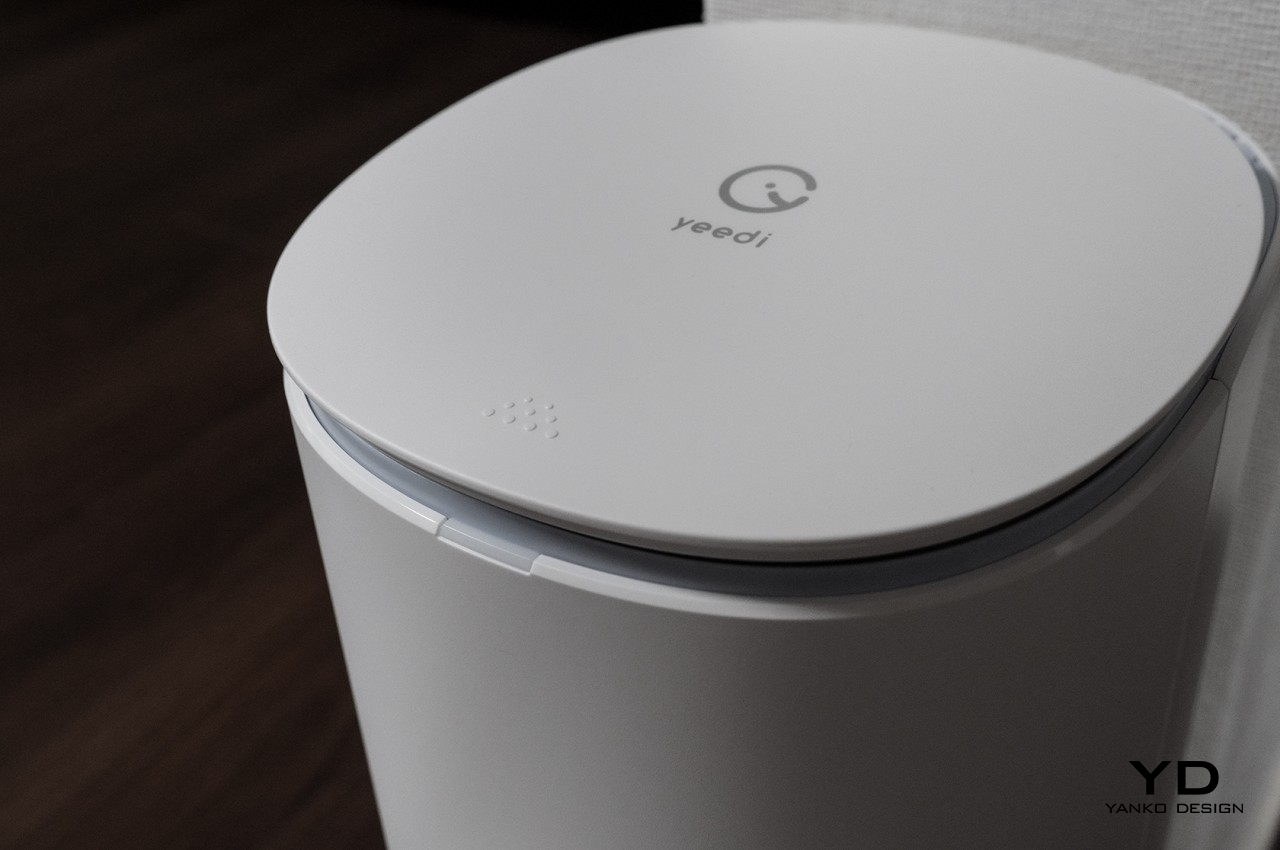
The same can’t be said of the mopping function, though. The mopping pad itself has to be washed manually, and you’ll need to also refill the 240ml water tank on your own. The vacuum isn’t too heavy to do all these, but it can be quite a hassle and sort of takes away the convenience of not having to mind the machine for a month. You could do that if you only rarely mop, but you’ll have to remember that moist and wet surfaces can house other kinds of harmful materials, especially when left untouched for long periods of time.
The docking station itself is quite heavy and doesn’t have handles for carrying it around. The design, along with software limitations, seems to be intended for single-floor use only. You’ll also have to decide early on where to place it and keep it there almost permanently unless you don’t mind the difficulty of carrying it to another spot. Yeedi recommends leaving plenty of room around the vacuum cleaner, which is a luxury not many homeowners can afford. In practice, however, it’s perfectly fine to leave it in nooks and crannies as long as there’s enough room for the robot to move to and from the dock.
Performance
The Yeedi Vac Station has a maximum sucking power of 3,000Pa, which is definitely plenty for most floor types. It even has a boost mode for carpets, though it’s not really enough for deeper rugs where dirt just gets too embedded to remove. At this max+ level, the vacuum isn’t that noisy, but the sound is definitely audible. The standard 600Pa, however, might have too little power for a good clean, so you’ll probably want it to use the 1,500Pa “max” on average. Fortunately, the robot is smart enough to use the appropriate level on the right floor material, but you have to be smart enough to make sure not to schedule it to move in the middle of the night.
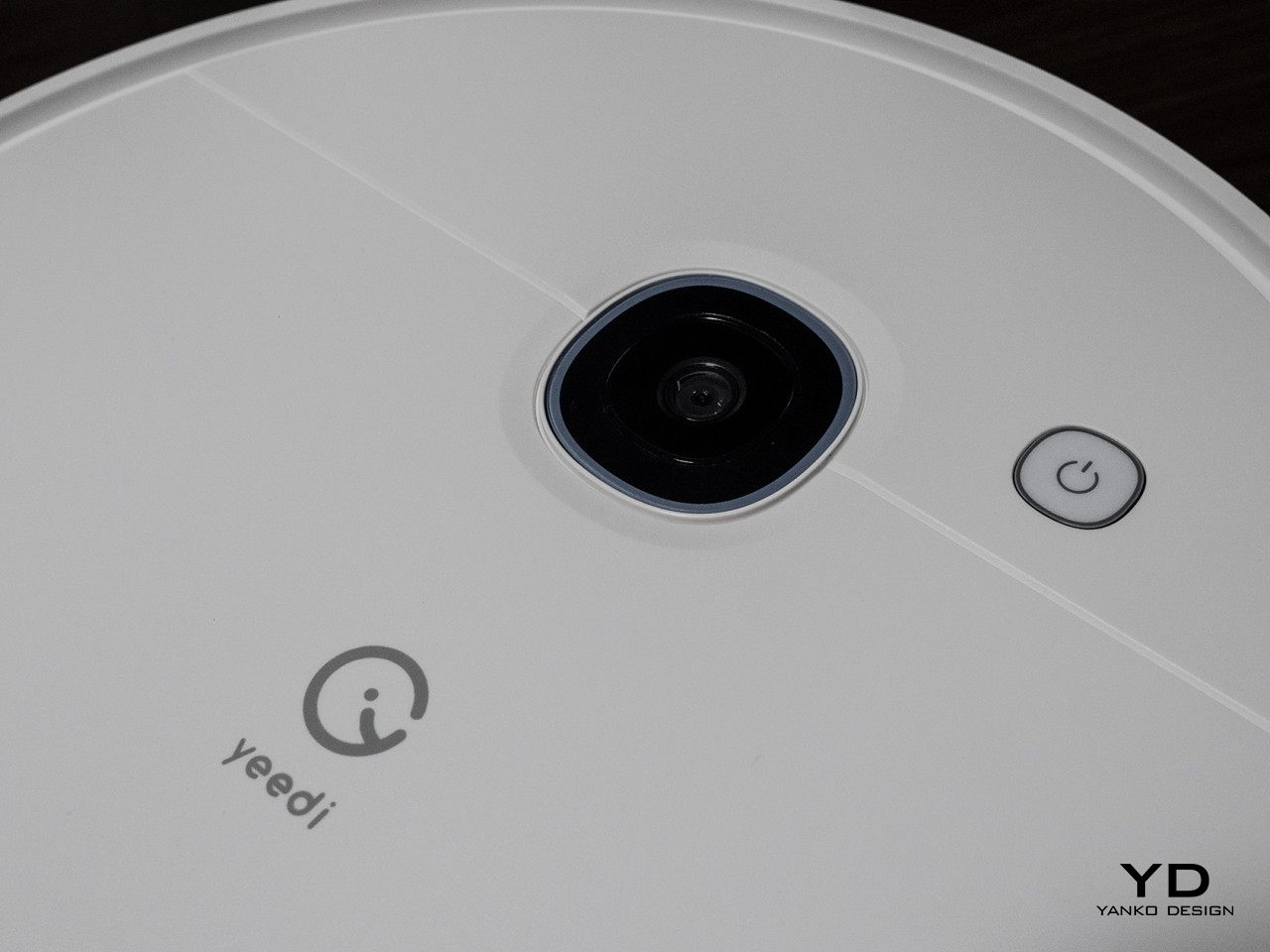
The Vac Station’s dock empties the robot’s small bin by sucking it out, which, as you might expect, also creates some noise. A lot of noise, in fact, to the point of being disturbing. This is definitely something you won’t want to happen while you’re sleeping, and the app, fortunately, lets you easily schedule those at your convenience. Setting up the app is trivial and only requires connecting to your home Wi-Fi. The robot, which uses V-SLAM (Vision-based Simultaneous Localization And Mapping), will automatically map out the floor and its rooms during its first few runs. While it is able to accurately identify and color-code rooms, it unfortunately only has space for one map. If you ever want to use it on another floor and then return it to its original spot, you’ll have to do the setup all over again each time.
An initial charge of the Yeedi Vac Station requires at most eight hours, but your actual time will vary depending on the battery level. On average, charging it from zero to full just takes around six hours, which seems to be on point. Yeedi advertises around 200 minutes of operation time on a full charge, but that naturally depends on the suction level you’re using and your total floor area. The robot is smart enough to know when it’s time to go back home, of course, but you’ll have to make sure that it actually starts its route from the docking station every time.
The vacuum works best on hard floors, where it can suck up dirt and small objects with aplomb. It can do heavy carpets and rugs, though you might find smaller floor mats pushed around rather than driven over. Its intelligence and vision are pretty accurate, so you won’t have to worry about it falling to its death. It’s not perfect, mind you, and it will get some odd corners and edges wrong. That’s the unfortunate drawback of V-SLAM compared to a more accurate but more expensive LIDAR technology.
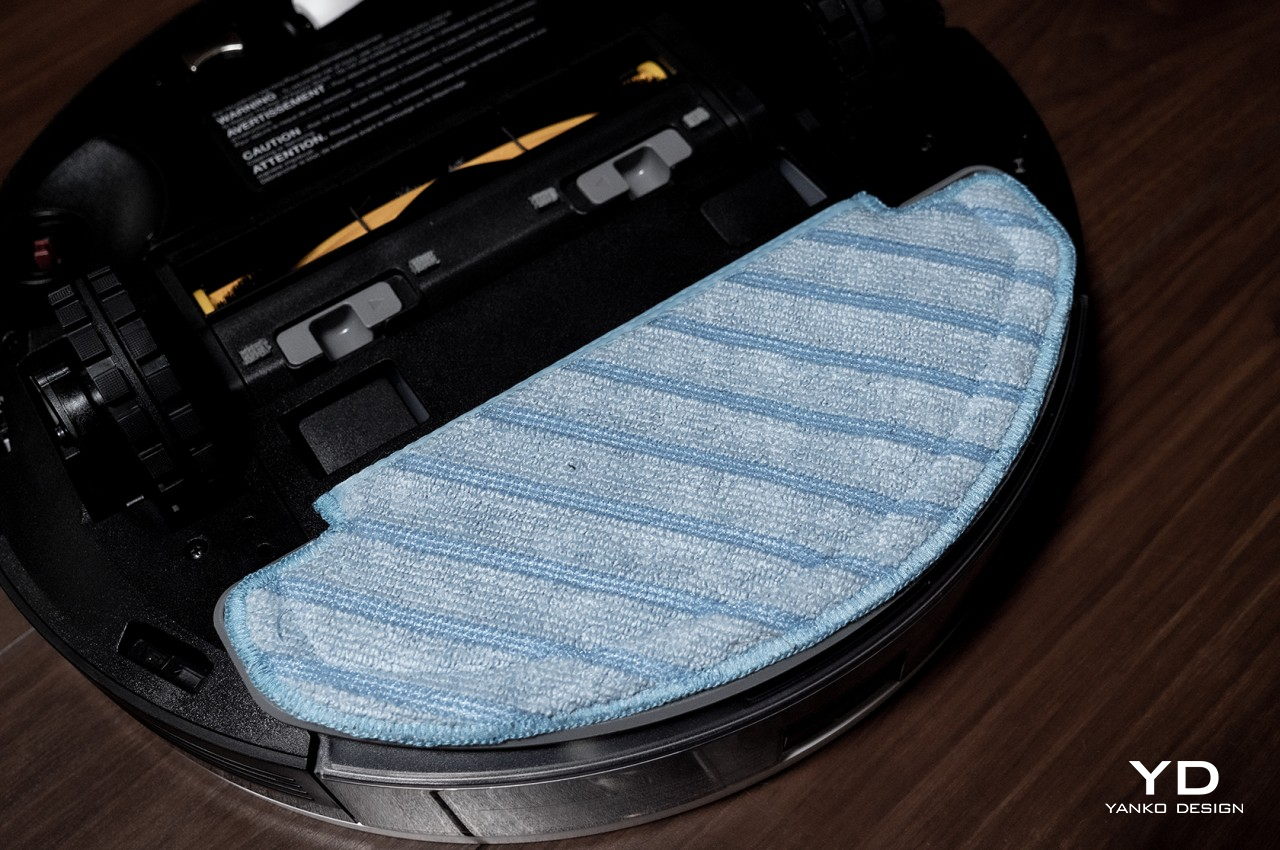
While the Vac Station’s vacuuming performance is more than decent, its mopping function is unfortunately average and almost feels simply tacked on. The mopping pad is just as effective as wiping the floor with a damp piece of cloth rather than actually mopping it. There is barely any force exerted, so there’s no way to really clean up stains and sticky substances. It does fine if you’re only expecting light mopping, but you’ll have to remember to do the hard work later on. One thing to note is that if the vacuum passes over carpets on the way back to its station, you might end up with damp spots because of that mopping pad. There’s also a chance that the charging connectors beneath the vacuum won’t make contact with the dock because the water tank makes the robot too heavy on one side. Fortunately, mopping is always an optional feature that you can opt not to use if you don’t want to.
Sustainability
Despite being older than most smart appliances in the market, robot vacuums haven’t made little headway in improving their sustainability over that period of time. Many of them, including this Yeedi Vac Station, make use of plenty of plastics and materials that are harmful to the environment in the long run. Some even make use of chemicals that could prove poisonous to the land when disposed of irresponsibly. Although many have replaceable parts, the repairability of such devices isn’t exactly that high.
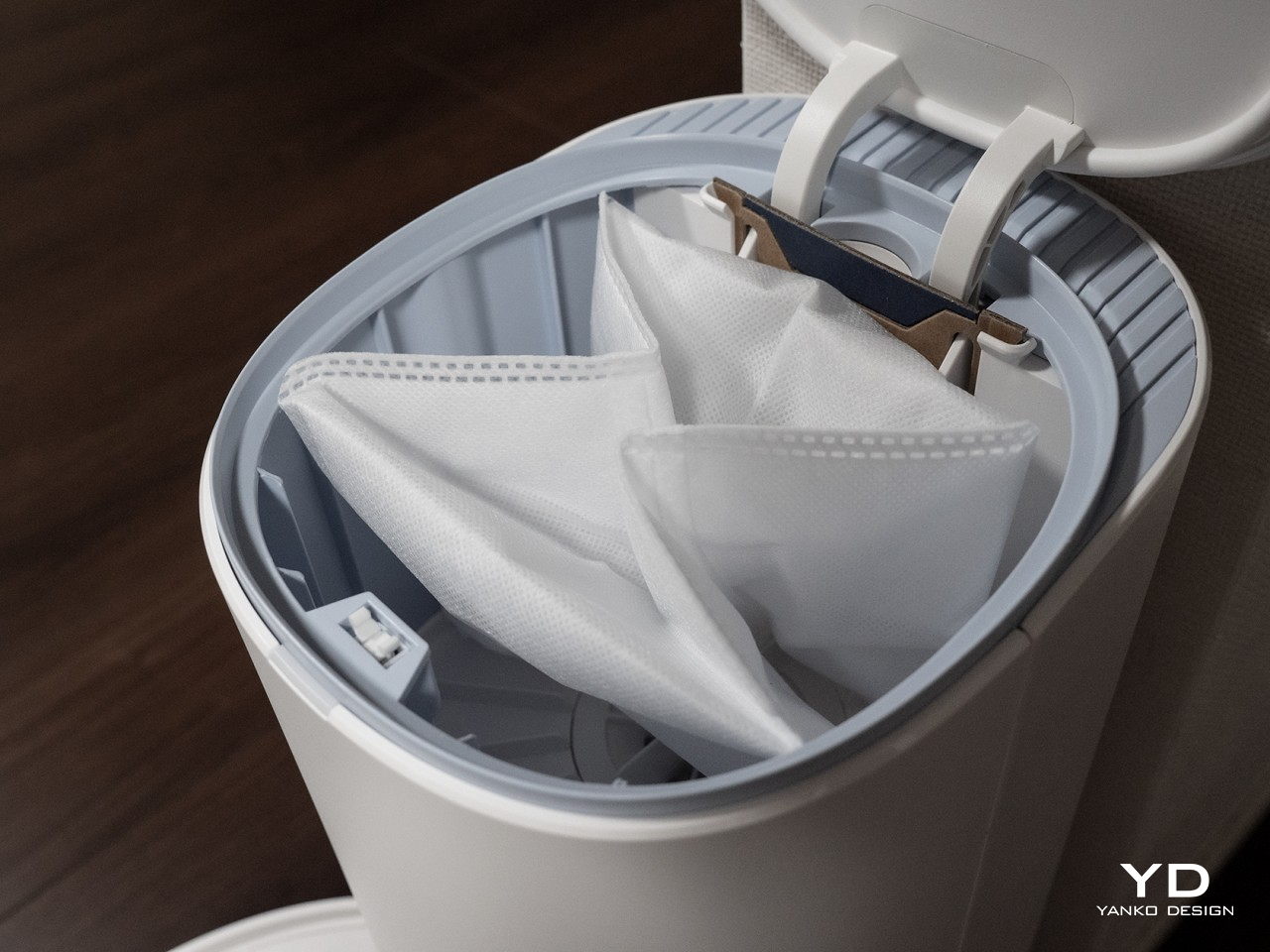
Yeedi scores a few points in this area, though. For one, it doesn’t require the use of such chemicals for its mopping and cleaning functions, so ordinary water will do. The replaceable dust bags aren’t made from plastic and only have to be thrown out after 30 days or so, reducing their waste potential. The mop is washable so you don’t have to replace it often either. Replacement parts are also readily available, prolonging the life of the product for as long as possible.
Value
Robot vacuums are no longer alien in many households, and they are a dime a dozen in many stores around the world. Most of these, however, offer the same basic functions that it’s hard to really tell them apart aside from their brand names. In practice, those might not even matter since they all perform similarly.
The Yeedi Vac Station is, of course, part of the new generation of robot vacuums that do more than just vacuum. In fact, it also does more than just vacuuming and mopping because it can practically clean itself until it’s time to take out the large dust bag inside the docking station. This significantly reduces its operation difficulty and minimizes the risk of contaminating homeowners. For a $359.99 smart home appliance, that sounds like a fair deal.
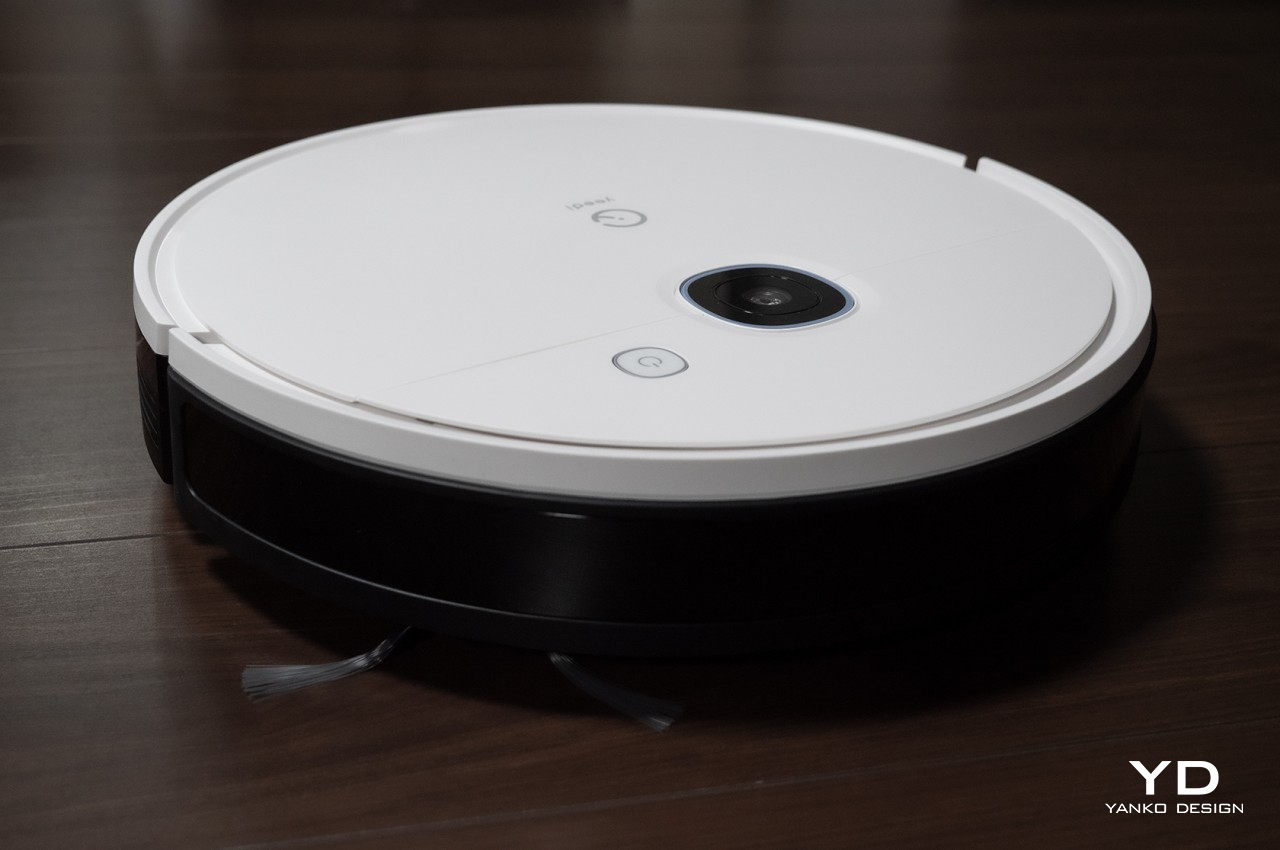
Unfortunately, there is also a new breed of robot vacuum cleaners that could have you reconsidering your decision to purchase the Vac Station. These machines focus more on the mopping function, not only performing better but even cleaning those mops without getting your hands dirty. Of course, they’re more expensive at this point as well, so you’ll have to really think hard about which is more important for your house’s upkeep. Fortunately, Yeedi offers both types of robots, so you won’t have to look elsewhere.
Verdict
Smart home products are supposed to make modern life more convenient, safer, and more enjoyable. Some of them do, like smart cookware that takes the stress out of preparing delicious and healthy meals. Most of the marketed smart devices, however, seem to focus simply on appealing to the lazier side of human nature. What could be easier than having the lights turn on or off at the right time without even pushing a button? Unfortunately, not many hit on the real problem of living, like keeping the house safe, clean, and healthy.
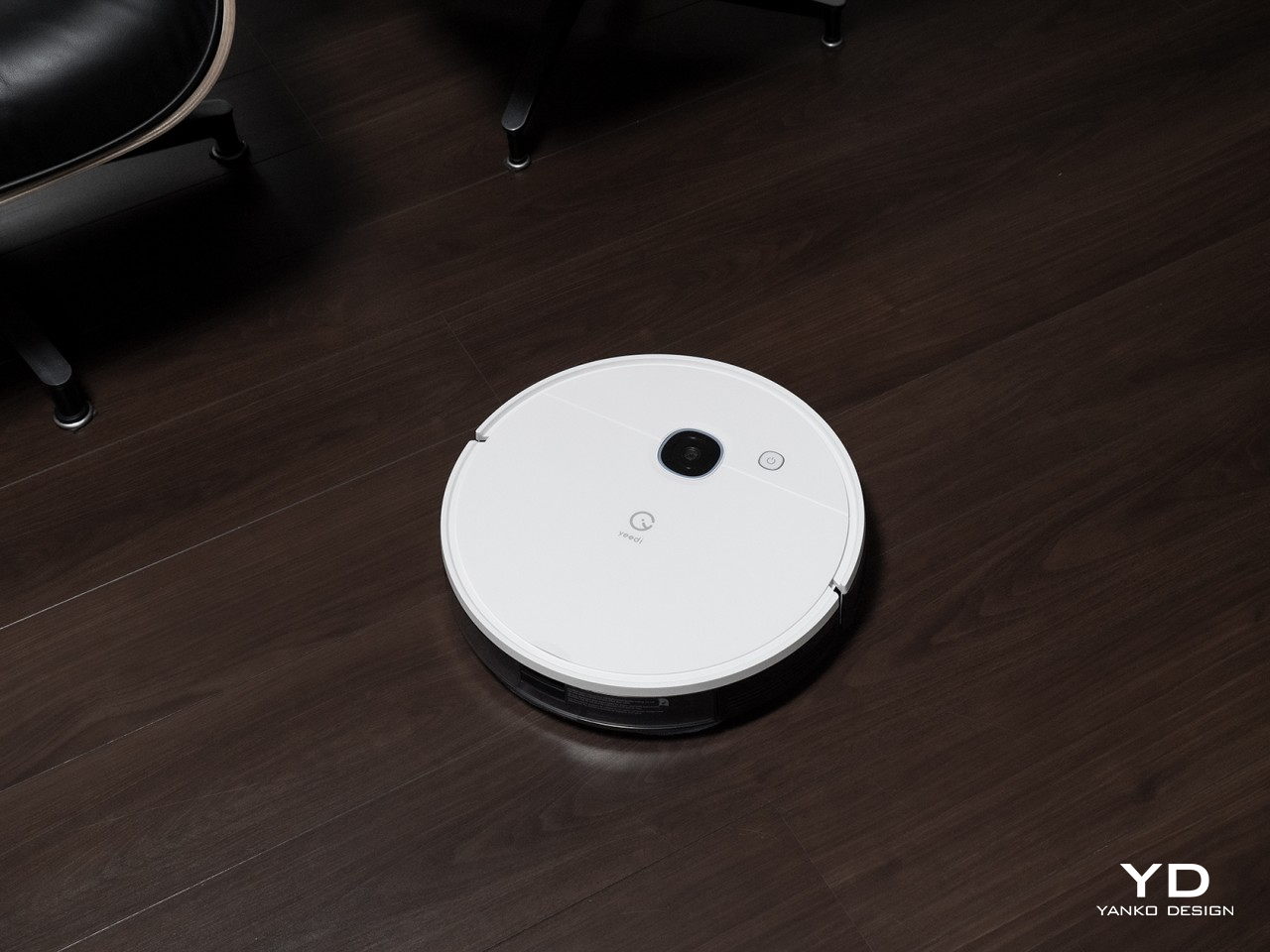
Robot vacuum cleaners are just a part of that small section of smart homes, but they do an important job in relieving humans of chores that could actually get them sick, ironically. The Yeedi Vac Station does one better by removing the need to constantly take out the dirt from the vacuum’s bin and only removing the dust bag after a month. Unfortunately, it doesn’t save homeowners from getting their hands dirty and wet when it comes to maintaining the robot’s mopping function, which is sadly average and more work than it’s worth at times. If you’re in the market for an affordable and painless automated vacuum cleaner, the Yeedi Vac Station definitely fits the bill. If, on the other hand, you’re more interested in the mopping aspect, a more dedicated but more expensive Yeedi Mop Station might be a better long-term investment.
The post Yeedi Vac Station Review: Keeping Your Hands Clean first appeared on Yanko Design.
from Yanko Design

0 Comments